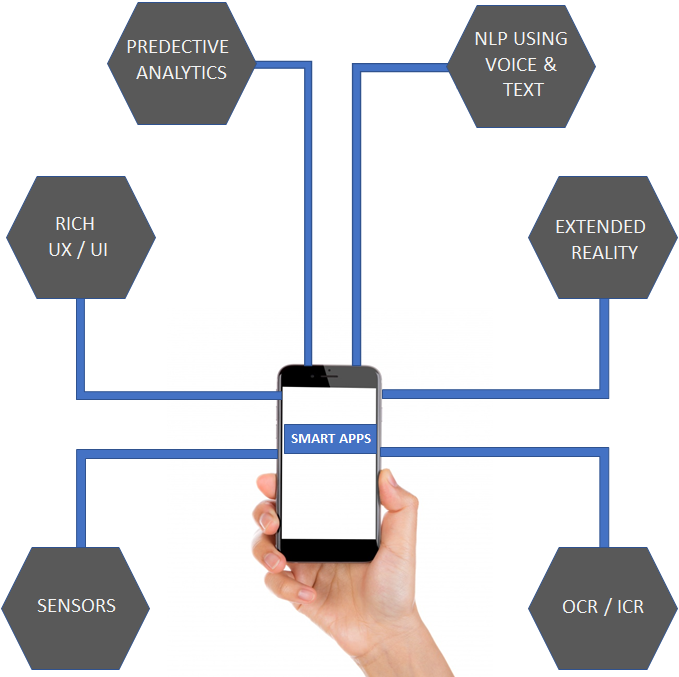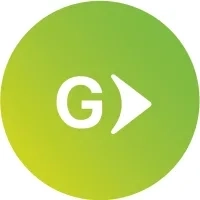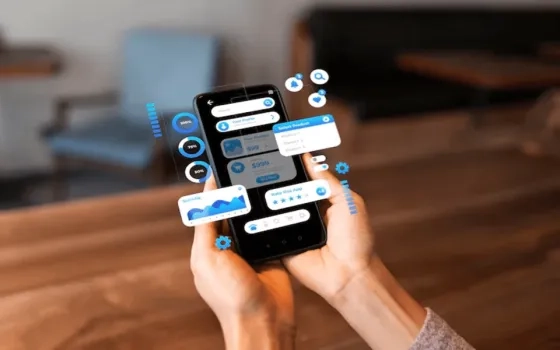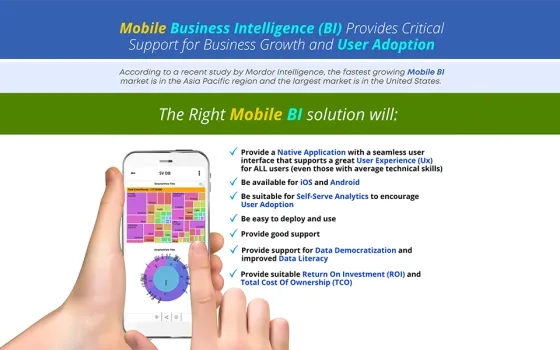The Mobile Revolution
Mobile devices nowadays are used for various purposes. People are using mobile devices and applications for their day-to-day needs ranging from critical banking needs to routine tasks like grocery shopping. Also, in terms of usage, Mobiles and Tablets have long replaced desktop machines as devices of choice for fulfilling all the needs. This has brought about a revolutionary effect on the human lifestyle right from reducing the gap between virtual and real and also opening up new avenues for lifestyle applications. For example, video conferencing applications that could connect us with anyone across the globe, ensuring contact and business transactions are continued without hindrances even in the testing times we are facing.
In today’s age of continuous evolution, the “smart” concept has been applied to various aspects including Smart Cities, Smart Homes, Smart Cars, and Smart Watches to name a few. Applying this thought process to the mobile technology world is the challenge players in the industry are working to overcome. Apart from safety, security, functionality, and ease of use, another point of research in the mobile application development arena is the criticality of creating unique experiences for the end-user thus compelling repeated usage.
This brings in the relatively unexplored Smart Concept of mobile applications called Smart Apps which we would ponder upon.
So, What are Smart Apps?
Smart apps are Artificial Intelligence (AI) and Machine Learning (ML) enabled applications that provide a rich and personalized experience to end-users. These applications utilize real-time and historical data from the user’s usage patterns; combine it with predictive analytics, design thinking, and IoT based sensors to ensure enhanced user experience. Simply put, Smart Apps ideally is a coalition of multiple technologies which includes
- Mobile development
- User Experience (UX)
- Artificial intelligence
- Data and Analytics
- Internet of Things (IoT)
How do we characterize Smart Apps?
There are some basic characteristics of Smart Apps which make these apps different from regular mobile applications. The following characteristics become the basic features of Smart Apps.

Omnichannel
Smart apps provide a seamless omnichannel experience so that users can use the application on various devices and form factors (like mobile, tablet, and desktop) as required. Based on the user’s activity on one form factor its state will be maintained and saved so that when the user moves on to use any other form factor, the data and relevance will be maintained. A classic example of this would be that of OTT platform applications that could be utilized to watch your favorite movie or web series over handheld devices such as mobiles or tablets, or desktops or for that matter even Smart televisions.
Hyper personalized
Smart Apps do not expect users to follow the same long process every time. Instead, they collect various data based on the user’s behavior, usage patterns, and liking, and based on that they provide personalized results, a new application flow, and a user interface that suits the user. This reduces the inconvenience of users and hence users will be more inclined to use the application again and again. Numerous banking applications today enable users to log in by just scanning their fingerprints rather than the cumbersome process of keying in the user id and password every time they log in.
Data-Driven
Data is the most essential part of smart apps. It serves as a warehouse of information. Smart apps can collect data from various sources which include local data storage, cookies, server DB, sensors, hardware, etc. The applications then make use of this data, process it, and extract crucial information that helps in effective decision making.
Self Decision Suggesting
Smart Apps are intuitive and help the user to decide what is best suited for them. Smart Apps leverage AI and observe user interactions and then provide recommendations to the user. Users can then make final decisions based on their choice.
Current Requirement / Relevance
As Smart Apps study usage patterns and behaviors, they can easily differentiate between which information is relevant and which is not. Based on the current trend/business/market situation they may bring up the highly required steps/processes. They can also provide warnings and risks involved in any particular assignment.
Self Learning
Smart Apps can automatically update learning and knowledge of their app using AI and ML-based algorithms. With this self-upgrade, users will always get up to date and the latest information.
Throwing some light on the Technical Details of Smart Apps
To implement the above characteristics there are various technology frameworks, libraries, and tools available. We could now deliberate on done cutting-edge technologies being utilized:

Predictive analytics
Predictive analysis is a branch of advanced analytics that is used to make predictions about unknown future events. Predictive analytics uses many techniques from data mining, statistics, modeling, machine learning, and artificial intelligence to analyze data to make predictions. A predictive score or weightage is assigned to every decision, depending upon multiple factors obtained from data. Predictive analytics can be applied to every application to deliver a more personalized, engaging user experience.
For predictive analytics, we can plan to use frameworks like SAP Predictive Analytics, Apache PredictionIO, IBM Predictive Analytics, Alteryx Analytics, etc.
Voice Processing
Language processing is an amazing feature used in Smart Apps. It is not only used in Alexa, Google Assistant, or Siri but is also used in mobile apps for quick responses. Using Neural networks and Natural Language Processing (NLP), developers can process voice and can bring them into action. NLP deals with the interaction between huge amounts of data and humans, using the natural language. Users can fire voice commands like “Show me bank statement of Jan 2020”, “Which is the shortest route to my office from here?”, “Filter out wireless earbuds of my favorite brand”. And in response, the users will get the desired output, instead of manually searching or filtering it out. This feature can be very well utilized for individuals with disabilities and convenience. For voice processing, developers could leverage tools like Google Cloud Vision APIs, Stanford’s CoreNLP, TFLearn, Keras, Theano, Chainer, etc.
Extended Reality
Extended Reality is another domain that allows simple apps to act smartly. Using Augmented Reality (AR) users can visualize information through UI-elements in real-time. These UI-elements or objects are nothing but computerized synthetic models, which are designed for better user experience. To provide information in real-time, we need to unite 3 parameters – GPS location, compass, and accelerometer to give accurate data on what we see on the screen. Developers could certainly use libraries and frameworks like Kudan, Simple CV, Vuforia, Wikitude, ARCore, ARKit, etc.
Device Sensors
Device sensors are a huge source of data. These data points could then be used by the application to provide useful information. Sensors like accelerometer, gyroscope, barometer, bioimpedance, heart rate, or temperature monitor can together be used to provide biometric solutions. OBD systems connected to vehicles give access to the status of the various vehicle sub-systems. This data can be analyzed for better performance of vehicles. Other sensors like light, motion, water, smoke, the door can be used for home and factory automation. Frameworks used for analyzing data from these sensors include IBM Watson IOT platform, Cognitive APIs, GE Predix, ThingSpeak, DeviceHive, OpenHab, etc.
Optical Character Recognition (OCR) and Intelligent Character Recognition (ICR)
Optical Character Recognition(OCR) is the conversion of images of typed, handwritten, or printed text into machine-encoded text, whether from a scanned document, a photo of a document, or a scene-photo. Intelligent Character Recognition (ICR) is an advanced optical character recognition method with a more specific handwriting recognition system that allows fonts and different styles of handwriting to be learned by a computer during processing to improve accuracy and recognition levels. It uses deep learning for perfection. These technologies can be used to convert an unknown scripted language into a readable language. This is a must feature for smart apps which include traveling to understand directions, shop-boards, etc. Leading OCR/ICR libraries available include Tesseract, Google Cloud Vision APIs, Microsoft Document Imaging, Apache Tika, Core ML, Tensor Flow, etc.
So where can Smart Apps be utilized?
The introduction and periodic evolution of Smart Apps are likely to make a positive impact across all the business areas. Let’s take a look at a few such business solutions and scenarios:
- Usage of extended reality to find out whether all the security measures for situations like the COVID-19 pandemic are followed or not.
- Usage of gesture APIs to book an appointment and also finding a route to reach the hospital
- Use of personalized notifications for medical adherence
- Online smart learning using AR / VR
- Use of VR for real-time streaming of shows and games for a personalized experience
- Expense management for a user based on the expense pattern observations
- Provide virtual tours using VR to demonstrate the workflows of various machines
These are just a few examples using which we can create a rich experience for end-users. Apart from these as well we can have numerous other mechanisms that effectively can help the user with a rich and personalized experience.
Conclusion
In the current scenario, it is paramount to use new technology trends and provide Smart Apps to customers which will ensure excellent user experience. With the help of the latest trends like IoT, smart wearables, augmented reality, gesture recognition, big data, and artificial intelligence, we can create further Smarter solutions for customers. These solutions may include touchless banking, advanced medical solutions, connected cars, augmented education, and smart hospitality to name a few. With such advanced full-blown digitized solutions, the demands for Smart Apps is expected to rise exponentially to ensure the enriched customer experience.
About the Authors
Swapnil Padhye is a digital technology leader with over 17 years of experience. He has expertise in frontend technologies (mobile and web) and the IoT domain. He has strategized and led the center of excellence (CoEs) for frontend technologies and created technology roadmaps for various enterprise customers. He has also led multiple B2E and B2C grade solutions using native and hybrid technologies. Currently, he is managing the Mobile and IoT Studio at Globant India.
Jatin Vakharia is a specialized mobile developer and leader with close to 10 years of experience. He has proficiency in working with e-commerce and IoT domains. He has also worked over the Application Frameworks layer of Android operating systems dealing with various services and managers. And a passionate developer to implement cross-platform, backend, and cloud solutions. He is also an enthusiast writer, with skills in writing motivational books. Currently, he is an android team lead at Globant.


















